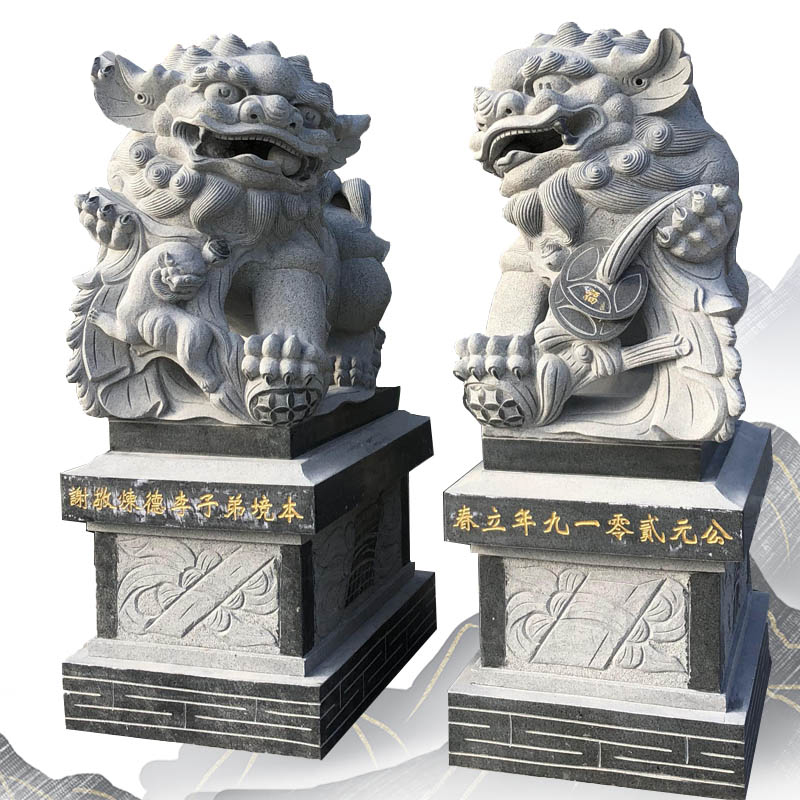stone crafts usually refer to works of art, which are mainly used to beautify the environment or commemorate something with special significance. They are usually artificially endowed with some morals or symbols, and have strange and diverse shapes. So, what are the main tools for creating stone crafts, and how should stone crafts be maintained?

(1) Wooden sticks and mallets are one of the necessary tools for stone crafts to pile up large mud. The wooden mallet is used to knock the mud blocks to make the mud blocks dense and bonded to each other to enhance the fastness. The wooden stick not only has the function of a mallet, but also can be used to shoot the general block structure of the statue. Especially when making large-scale stone handicraft clay molds, it is often used.
Mallets can be bought in grocery stores in the market. They come in large, medium, and small sizes. Generally, a small one is enough for beginners. The wooden stick can be made by yourself. Take a square wooden stick with a length of 30 cm and a square of .4X4 cm, and cut one end of it into a handle shape to facilitate grasping. The roughness and smoothness of the rod surface vary from person to person. I think it is better for the stick surface to be rougher, and it is not easy to be stained with mixed oil and mud.
(2) Clay sculpture knives are used for clay and shaping. Clay sculptures include round, oval, inverted triangle and other shapes of the head of the knives. The tail of the knives is in the shape of a double-mouthed sharp knife or a single-mouthed sharp knife. Used to add mud and shape. The clay sculpture cutter is generally used to remove the mud from the concave part of the stone handicraft, so that the shape will have a concave surface or a negative line, and it can also be used for molding on the plane and curved surfaces.
(3) The mud cutter can be made of round steel (generally find a blacksmith for processing), and it is often used in the shaping process. It can cut the block surface of the statue, and can also be used when deep shaping. There are two types, one is a plastic knife with a triangular bevel at both ends, and one end can be filed into a serrated shape for plastic wrapping; the other is a flat end and a triangular bevel at one end, which is more convenient to use. .
(4) Compression plastic knives are compression plastic knives made of boxwood, Ueki, camphor wood, miscellaneous wood, etc. Feel good. In shaping, it is used for calendering, compaction, and surface shape treatment. When making it, first take a piece of boxwood, cut out the shape with a hand saw or a knife saw, and then trim it with a fine wood file. After polishing with sand leather, apply a little edible oil to the water knife for maintenance, so that the wooden knife will be smoother and stronger.
(5) The hook-shaped knife is mainly used for concave surfaces and hook lines on parts of the body that are not easily accessible by other knives. During production, several steel bars of different specifications are intercepted, and the two ends of the steel bar are processed into different shapes of cutter heads as required, and the two cutter heads are bent to make the handle of the knife S-shaped.
(6) The willow-shaped stainless steel knife is used to carve the details of the characters. Such as eyes, ears, mouth, nose, etc. and straight line processing in decorative stone crafts. Find a stainless steel welding rod and cut it to the length you need.
For maintenance, we should pay attention to that stainless steel stone crafts should be cleaned regularly and placed in a dry environment for protection. It is best to wear gloves when holding it by hand to prevent salt corrosion in the sweat on your hands. If the dirt on the stainless steel stone handicraft is too heavy, blow it with a cold wind hair dryer first. Then clean with a straw brush and finish with a soft brush. Never use metal polish, water, or any other solvents. That would tarnish the brass. For the gap of stainless steel stone crafts, we can wet the cotton ball with saliva and wipe it, and wipe it from beginning to end along the crack to avoid omission. Once a year, apply a thin layer of microcrystalline wax to the copperware, which is the colorless wax.



